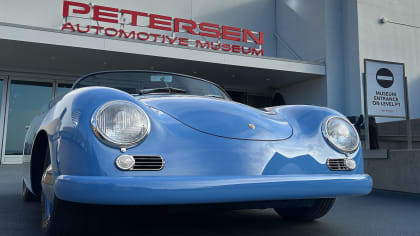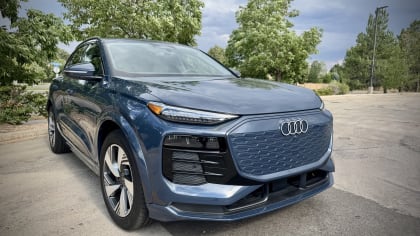DOWN THE RABBIT HOLE
How not to be the greatest car mechanic
This article is from our archives and has not been updated and integrated with our "new" site yet... Even so, it's still awesome - so keep reading!
Published on Wed, Dec 14, 2011
By: The LACar Editorial Staff

BACK SEAT DRIVING By David Chacon Has this ever happened to you… you change a sparkplug wire when all you really need to do is just change a sparkplug? Bought a new tire when you just need to put in air? Replace a fuel pump when it’s just a fuel hose with a hole in it? Actually, the latter of the three happened to me. It was on a grey primer 1986 Chevrolet Caprice, a nice car—V8 , four-door, smooth ride with some power. Chevy’s top of the line at that time. The car really didn’t even belong to me; it was lent to me by my then girlfriend. So I’m driving through the San Gabriel Valley one winter afternoon and I happen to stall out in the middle of surface street traffic (funny thing, gas gauge isn’t all that reliable either). So I push it to the gas station on the corner, as is the normal procedure in this situation. I add gas and think that I’m on my way, but wouldn’t you know it… It just doesn’t want to turn over quite completely! It appears that it isn’t getting fuel to the combustion chamber. So the next thing I do is try and see if I can put gasoline directly into the carburetor. I don’t really know what I’m trying to accomplish, though. It’s a wonder I don’t cause an explosion (I can see an old episode of The Three Stooges running through my head.) Needless to say, it doesn’t work; otherwise, I wouldn’t have too much of an interesting story to tell. By this time, the sun is down and I have to move the car. It’s a good thing I have an acquaintance that lives close by. So we pushed my car with his, and gave the Caprice a temporary rest spot in my friend’s backyard until I can tackle the task I now have at hand. Thinking about the problem, I figure it might be good to throw some parts at it to fix it (never a good idea), starting with a fuel pump. I acquire the correct replacement fuel pump from the local parts store and I show up to the yard where the car is. After literally throwing the part at the car with no result, I decide to actually put it on to see if that solves it. Now let me paint a picture of the location. Dirt yard with patches of grass, winter season so very cold, must’ve recently rained because the ground is a bit muddy. And I have to get under the car because the mechanical fuel pump is on the bottom attached to the block towards the front. Armed with a decent socket set and the jack that the car came equipped with, I attempt to change the fuel pump, constantly worried about the jack slipping. Sometime later, I finally finish. Confident and satisfied, I enter the cockpit and I turn the key just to hear that same whine, whine sound with no combustion! Sadly, I go back under the hood, cursing myself under my breath. I return under the car thinking “what did I do wrong?” as I examine the brand new fuel pump that’s just been installed. It’s at that moment that I focus on the small rubber fuel hose leading inside the fuel pump. I just happen to notice that there’s a small hairline cut on the hose (probably due to age and time along with elements). I chuckle to myself thinking (at this point hoping), “could it be this easy?” I just spent the whole day already; do I take a trip and buy a new hose? Or should I, could I, just cut and stretch it? Well I’m here to tell you that it reaches and I’m happy to hear the engine roar again! I’m dancing all by myself and I’m able to drive away. I consider myself to be an everyday mechanic—i.e., I do my own tune-ups and light-major work on all my own cars. It’s not always good because I don’t have all of the regular diagnostic tools that a shop has. It’s a common mistake for all every-day, at-home, and shade-tree mechanics. I probably spend double the amount that I’d have to if I could only invest in a decent set of diagnostic tools. The permanent diagnostic tool that I do carry around tends to get a little rusty and often jumps ahead of itself. I’m referring to my BRAIN! I learned that day under the Caprice to start with the most obvious thing, instead of just replacing parts until the car runs better. In hindsight, the best and least expensive inspection is the visual inspection. No scan tool required. It just takes a little bit of time, and costs virtually no money at all. Maybe you’ll get a little bit of dirt on your knee, but follow the system that seems to have failed from beginning to end, and the problem will often reveal itself. If you are afraid of that little bit of dirt, by the way, you might just be in the wrong business!




